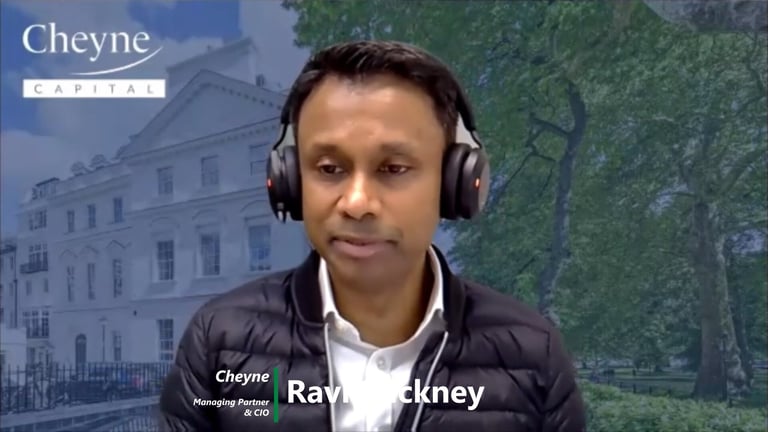Real Estate Credit Investments Ltd (LON:RECI) is the topic of conversation when Hardman & Co’s Financial Analyst Mark Thomas caught up with DirectorsTalk for an exclusive interview.
Q1: Mark, your recent report on RECI, it sits behind a disclaimer. Can you just tell us why that’s there?
A1: It’s a very standard disclaimer that many investment companies have. In essence, for regulatory reasons, there are some countries like the US where the report should not be read. I mean, it’s not a simple asset class and the report should be looked at by professional and qualified investors, but it’s a very standard disclaimer.
Q2: Now, your recent report was called ‘Meeting Any Potential Macro Challenges Head-On’, what can you tell me about the report?
A2: In our view, there remains great uncertainty on tariffs, on one day, off the next, double the next, etc., and whether the US and global economies will fall into a recession or not. Now, over the past six years, we’ve written many times on why Real Estate Credit Investments has a resilient model facing any type of economic environment.
In this note, what we do is revisit why it is so strong, and in particular noting the credit assessment, monitoring and problem account management. We note the benefits of being a senior finance provider, the geographical and sector diversity of its loan book, portfolio mix changes, including the reduction in the more volatile mark-to-market bond holdings. As we’ve noted in previous reports, spreads widen in challenging times as peers withdraw, and this gives RECI new investment opportunities. The credit skills of the manager, Cheyne, are core.
Q3: What makes them different from other real estate lenders?
A3: The key to their resilience is the credit skills of the manager, Cheyne. In our note, we detail the multiple facets of this resilience.
Now, it ranges from lending based off expected cash flows, not security values, being highly selective. Cheyne declines 90% of applications, and this selectivity is further enhanced by RECI, which only participates in about 40% of the Cheyne loans. We also emphasise the relationship approach. It’s not a transactional lender. The right reporting structures and corporate governance for the risk units and the benefits of good security, which, very importantly, is effectively implemented. If you were to push me, I think the single differentiating factor is the ownership of the loan by the relationship manager that initiates the loan. They have an ongoing relationship with the customer, and importantly, it’s them that sorts out the problems.
Now, that is very different from many lenders, and it’s a really important cultural difference.
Q4: You also highlighted the opportunities. Why do challenging conditions make it easier for Cheyne or RECI to increase new investment returns?
A4: The first thing to highlight is that the reasons outlined in our report, RECI Cheyne’s risk controls are good, and this limits the downside losses. When we see challenging conditions that could see losses, that’s when banks’ appetite to lend to commercial real estate wanes, partly because of their heavy capital requirement. They often introduce tighter sector limits on commercial real estate, meaning that good counterparties still have difficulties getting finance, so Cheyne has a bigger pool to cherry pick from. In particular, we highlight that development finance is especially hardly hit, so yields in that area can rise quite often sharply.
Now, when conditions normalise, bank appetite returns, Cheyne loans get refinanced because they can be done at lower rates, but it earns exit fees. Now, in our note, we highlight the multiple variants of private credit that have been seen over the years, and they also, in our view, are likely to withdraw at such time. Now, Cheyne has achieved not only better yields, but improved covenants on new investments at such challenging times.
Q5: It’s easy to make theoretical claims about RECI’s resilience based off what should happen, so I guess investors want to know really what proof you have that this is what’s actually happened when RECI has been challenged in the past.
A5: I think that’s exactly the right question to ask. In our view, there is multiple evidence of the resilience of RECI’s model.
So, first, there has only been one realised principal loss since its evolution in 2011, so in 14 years, one realised loss. Secondly, the recovery that was seen in subsequent periods when mark-to-market losses were taken on bonds in uncertain times. We wrote a specific note on that in August of 2022, called ‘Marks taken in uncertainty released thereafter’. Thirdly, we highlight the effective restructuring of hospitality loans during and following COVID-19, when hospitality was especially hard to hit with no travel, no activity, and this resulted in Cheyne and RECI getting higher yields and no principal losses. Fourth, we recognise, we highlight the recognition by RECI that its returns are resilient enough and it doesn’t have to chase higher potential yields on riskier loans or on bonds where it doesn’t have the same control and active participation that it does do in terms of loans themselves.
Now, in terms of evidence of opportunities, there was a rise in loan portfolio yields from 12.3% in May 2016 to 12.6% in December 2016, that’s post the Brexit vote. It takes some time, but there’s a positive rising yield there, they rose from 9.4% in January 20 to 10% in June 20, so the initial COVID period when benchmark rates were actually falling.
So, the rising yield is actually a much bigger spread.
Q6: Now, as we know, there’s always risks with investing. What can you tell me about the risks here?
A6: There are risks with any investment. The risks of a recession are clear to see with higher interest rates, low disposable income, falling property prices, residential and commercial compounded by distressed sellers of assets, rising social tensions, governments facing large deficits, central banks, inflationary pressure. Who knows what the effects of tariffs will be on that so a load of macro risks.
What we highlight in this note is how Real Estate Credit Investments is resilient to the macro environment.







































